Debunking Myths: Is Everest Base Camp Dangerous?
Is Everest Base Camp Dangerous? It's a question that often crosses the minds of adventurous souls.
Let's set the record straight: trekking to Everest Base Camp is different from summiting Mount Everest. About 40,000 people make their way to South Base Camp each year, but only a few hundred attempt the summit each year.
Let's debunk myths, offer practical advice, and set you on the path to the journey of a lifetime.
How Dangerous Is Trekking to Everest Base Camp?
First things first, trekking to Everest Base Camp is a challenging but manageable experience. An EBC trek is within your reach if you're moderately fit.
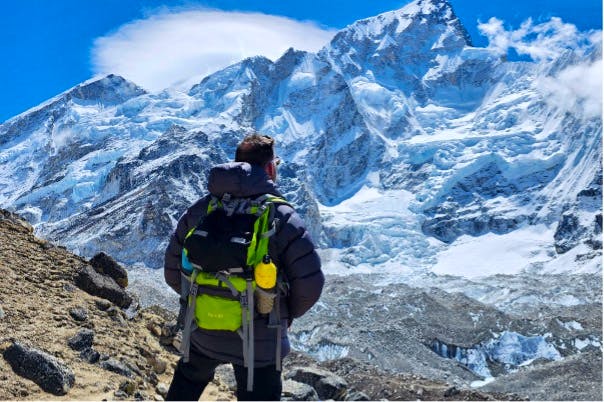
1. The Myth of Terrain: Navigable and Manageable
Contrary to popular belief, the route to Everest Base Camp is well-trodden and far from dangerous. In fact, the trail to Everest Base Camp meanders through gentle gradients with some steep ascent, but rest assured, you won't be doing any technical climbing and there is no exposure.
The trail is about 65 km long, and an average person can comfortably walk 5-10km per hour. We recommend being able to walk 5-7 hours a day at a moderate pace of approximately 3-4 km/hour. People ranging from 16 to 80+ years have successfully completed the trek.
The terrain is not just for elite athletes; it's for anyone with a moderate fitness level and the proper preparation. You don't need to be an athlete, but training for Everest Base Camp can significantly improve your stamina.
Learn more about how long it takes to hike to Everest base camp.
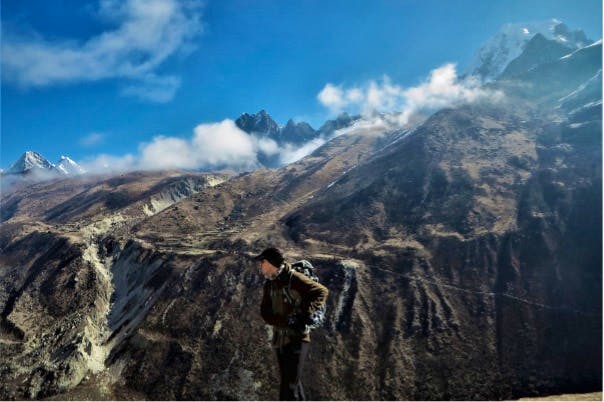
2. The Myth of Timing and Weather: Plan Wisely
Let's dispel another myth: the notion that EBC weather is a nightmare waiting to happen.
While it's true that the Himalayas are home to some of the world's most unpredictable weather patterns, proper timing can make all the difference.
Most reputable companies like Skyhook schedule treks during the most stable weather conditions (March-May, and September-October).
Gear also goes a long way in mitigating the weather factor. You've heard it before, but it bears repeating: don't skimp on equipment.
Quality equipment is not just about comfort; it's about safety. Waterproof boots, quick-dry T-shirts, and moisture-wicking layers can be the difference between a memorable trek and a miserable one.
See our guide to EBC clothing and our EBC packing list.
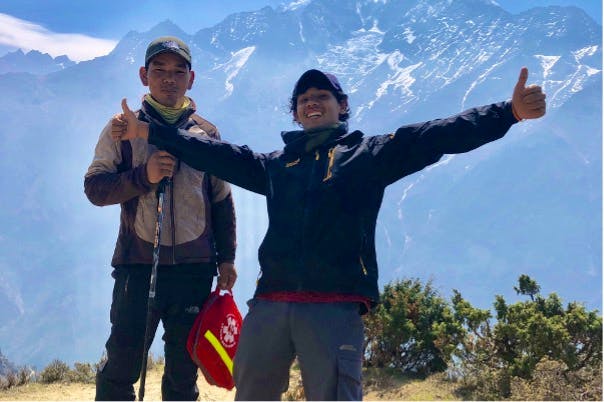
3. The Myth of Altitude Sickness: Know Before You Go
Altitude sickness is a concern but a manageable one. Acclimatization days are typically built into your itinerary to help your body adjust to the oxygen level at Everest Base Camp. Stay hydrated, pace yourself, and consult your doctor if you have health concerns.
Great local operators, like those featured on Skyhook, use guides trained in first aid. They can recognize early symptoms of altitude sickness, ensuring timely intervention.
In case of severe medical emergencies, make sure you have specialized EBC insurance that includes heli-evac.

Latest Deals
4. The Myth of Accommodations and Food: Rest Easy
Are you worried about where you'll stay and what you'll eat? Most quality local operators use reputable lodges and tea houses, ensuring quality accommodations and Everest Base Camp food.
Contrary to the myth that you'll be roughing it in tents and surviving on canned food, these lodges offer a variety of local and international cuisines to satisfy your palate. Many of these establishments have been serving trekkers for years and adhere to reasonable hygiene standards so you can dine and rest with peace of mind.
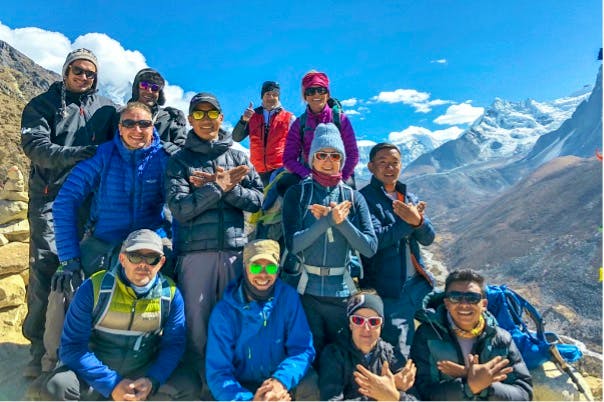
5. The Myth of Inadequate Medical Facilities: Safety First, Always
One common misconception is that medical facilities are limited during the trek to Everest Base Camp.
In reality, the trek is well-equipped with medical posts and high-altitude clinics, especially in villages like Pheriche and Lukla. These facilities are staffed by qualified healthcare professionals trained in mountain medicine.
Local guiding companies featured on Skyhook all carry comprehensive first-aid kits and have protocols for emergency evacuations, ensuring that help is always at hand.
6. The Myth of Dangerous Wildlife: Respect, Not Fear
Another myth that circulates is the danger posed by wildlife in the region.
While it's true that the Himalayas are home to various species, attacks on trekkers are extremely rare. Most animals are more afraid of you than you are of them.
Maintaining a respectful distance and following the guidelines provided by your trekking company will ensure a harmonious coexistence with the local fauna.
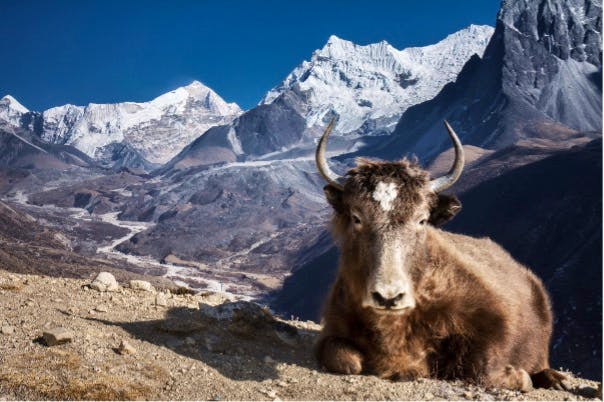
7. The Myth of Cultural Barriers: A Warm Welcome Awaits
Some potential trekkers worry about cultural barriers or offending local customs. However, the Sherpa community and other local ethnic groups are incredibly welcoming and accustomed to visitors.
A little research and respect go a long way. Learning a few basic phrases in Nepali and understanding local customs can enhance your experience and dispel any fears about cultural misunderstandings.
8. The Myth of Overcrowding: Room for Everyone
The idea that the trek to Everest Base Camp is overcrowded and that this poses a risk is another myth that needs debunking.
While it's true that the trek has gained immense popularity, companies like Skyhook offer excursions that provide a more intimate experience with nature. For example, see the Gokyo lakes trek to EBC for an off-the-beaten path experience.
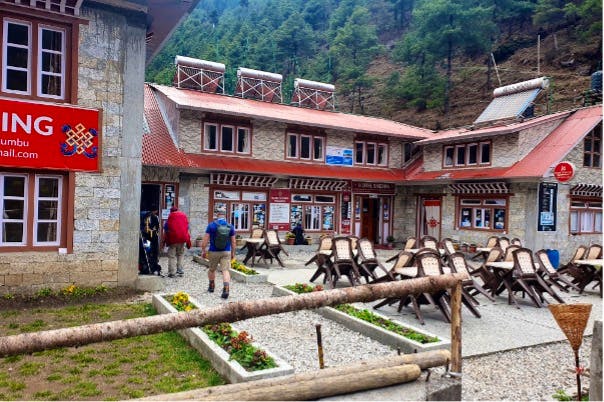
9. The Myth of Isolation: Staying Connected Is Easier Than You Think
One myth that often deters potential trekkers is the fear of being completely isolated and cut off from the world during the trek.
While it's true that you'll be trekking in remote areas, communication is easier than many believe.
Most trekking routes have Wi-Fi hotspots, and satellite phone services are available at various points. Mobile data and prepaid broadband connections are also options for staying connected.
In fact, Wi-Fi connectivity is available at various points along the trail. To be connected whilst on the trail I recommend getting a PAYG data package from Ncell.
Conclusion
The hike to EBC is a challenging yet rewarding experience. With the proper preparation and a dash of adventurous spirit, you're set for the journey of a lifetime. Ensure you partner with a reputable tour operator, and you'll never have to fear any of the Everest Base Camp myths.
More EBC Articles
Popular EBC Trips
Find your next adventure
Why Skyhook?
Join over 27,000 Skyhook adventurers who've used our platform to book directly with our vetted local guides, at local prices (we never markup).
Expert Local Guides
Experienced local guides, handpicked by us.
Best Prices
Never pay a markup on the local guide's price.
Exclusive Club
Earn loyalty rewards every time you travel.
Great Social Vibes
Small group tours provide a richer experience.
Stellar Feedback
Over 2,800 reviews, average of 4.9/5 stars.












